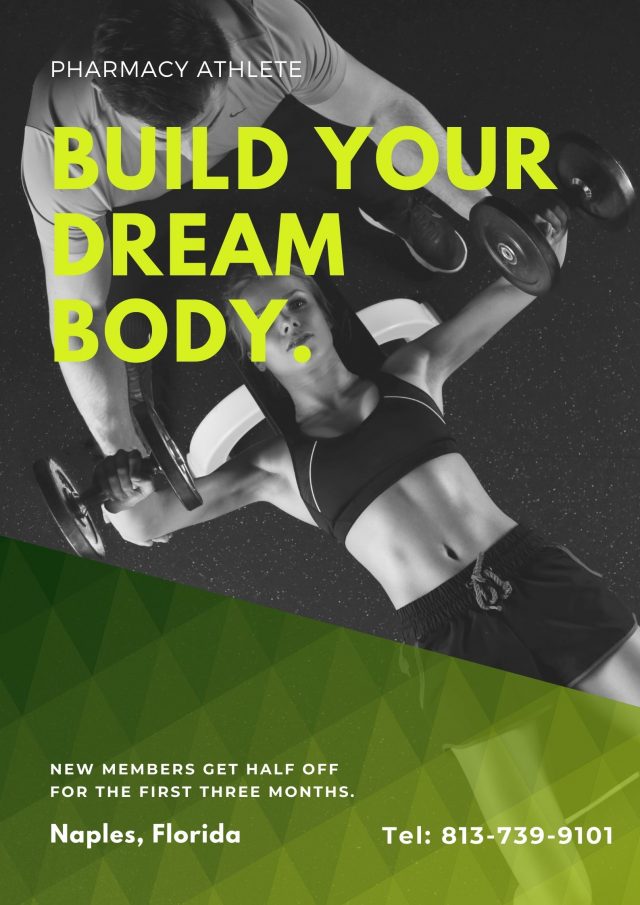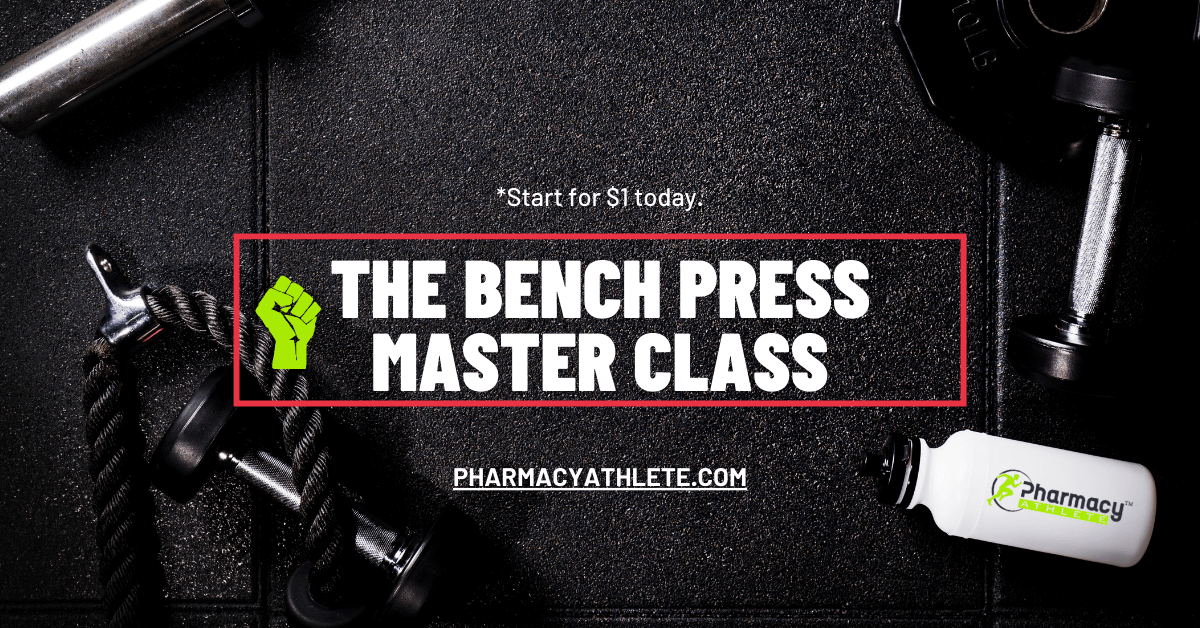Bench Press Master Class
You walk into any gym and you will never miss that one bench set up underneath a barbell. The bench press is a classic workout for anyone who loves to go to the gym because it doesn’t only help build your strength, but it also helps you increase your gains in three major muscle groups—the chest, front shoulders and triceps—all in one workout routine.
In fact, the traditional barbell bench press gets the most attention among all gym lift equipment that you would have to line up to get your turn sometimes. But while the bench press can give you so many benefits, it can also cause significant damage to your muscles and joints if not done right.
This is why I created this Bench Press Master Class where I teach you how to do this classic workout routine properly and enjoy its benefits while minimizing your risk for injuries.
Key points:
- The barbell bench press is designed to help measure and build upper body strength. It focuses on building the chest muscles (pecs) with the shoulders (deltoids) and triceps as secondary movers.
- In this master class, I will focus mainly on “5 Points of Contact:” the feet, glutes, upper back/shoulders, head and hands. These five body parts are crucial in making sure that you get the most from your barbell bench press. If done right, it will help you create stronger bench press exercises that increase gains and minimize the risk for injuries.
A look at the muscles that a bench press works on
Before we get into the details of this master class, it’s very important to understand what types of muscles this exercise works on. The pectoralis major in the chest is the primary muscle that a barbell bench press targets while it also stimulates secondary muscles like the triceps and the front and middle deltoids.
If done properly, regular bench presses will allow you to strengthen and build these muscles groups.
The movements involved in a bench press targets these muscles in different ways. For instance, you get the most movement from your pectoralis muscles when you do the bottom-third of the routine, which involves touching your chest to about 1/3 of the way up.
On the other hand, your shoulders get the most movement as you do the second part of your movement. The triceps are also stimulated at the third part of your movement.
In the “5 Points of Contact,” I’ll be discussing in detail everything you need to know to understand this workout routine better and make sure that you can do it safely with the most benefits.
The barbell bench press: An overview
Whether you’re doing the barbell bench press for the first time or you’re looking to polish your techniques, here are some steps that you should follow. I will get into more detail in the “5 Points of Contact” section, but this will give you an overview of the technique:
- Lie back on a flat bench with a rack, placing your feet flat on the floor.
- Grasp the bar with a grip width in accordance with your biacromial distance (check the “Hands” part of the 5 Points of Contact section), carefully un-rack the bar and begin with it directly over your upper pecs with your arms extended.
- Bend your elbows to slowly lower the bar towards your lower chest. Your elbows should be pointed forward with your upper arms at around a 45-degree angle to your torso. Keep both the back of your head and your glutes in contact with the bench the entire time.
- Touch your chest lightly with the bar, then press it back up in a slight backward arcing motion, so the bard ends up over your upper chest with your arms extended but not locked out.
5 Points of Contact: Doing the bench press right
A lot of gym-goers, especially the new ones, are intimidated by the bench press because they think that it’s hard to do and for some, it’s even considered a “dangerous” exercise. This is partly true because if you don’t do it right, you have a serious risk of getting injured.
But in reality, the bench press is just as safe as any other gym equipment that you can see. As long as you do things properly, you can get through your workout safely and with the most gains.
Here, we’ll talk about the “5 Points of Contact” and how you can maximize each step for your bodybuilding journey:
- Feet
Your first point of contact on the bench press is your feet on the ground because it will provide you most of the energy you need to do this exercise properly. This is because your feet will be your base and it will be one of your sources of force as you press the bar up.
What to remember: Pull your feet back on the floor.
If you want to maximize the strength and power coming from your feet, you need to position it as far back as possible, somewhere below your mid-thighs or hips.
When it comes to choosing between keeping your feet flat or keeping your heels up, it will depend on the height of the bench and the length of your legs. You just need to make adjustments as you see fit since not all bench presses have the same height.
- Glutes
Your next point of contact is your glutes and this is where a lot of people make some crucial mistakes that hurt their backs. The key to an effective bench press workout is to make sure that your glutes is always in contact with the bench.
What to remember: Your glutes should touch the bench and your lower back arched.
Your glutes should remain in contact with the bench the entire time you’re doing a bench press. To know if you’re doing this right, you should be able to create an arch in your lower back with enough space that someone could slide a hand freely between your lower back and the bench.
This position will not only protect your lower back, but it will also offer more stability in your spin and abdomen while maximizing your strength during pressing.
Some powerlifters will exaggerate their arch and raise their torso to create a shorter range of motion, but you don’t have to do this if you’re not competing in the bench press.
- Upper back/shoulders
Your next point of contact after your glutes is your upper back and posterior shoulders. This is also where a lot of bodybuilders make mistakes because they tend to push their shoulders up at the top of the rep rather than keeping it in contact with the bench.
What to remember: Keep your shoulder blades pulled back and together while your elbows are tucked in.
Your first move should be to pull your shoulder blades down into the bench. Just think of this like you’re holding grapefruits in your armpits, and you need to work on keeping them from falling to the floor.
Make sure that your shoulders are down and back while your elbows are in instead of out. Avoid flaring out your elbows because it will put you at risk for injuries.
- Head
The last body part that should be in contact with the bench is your head. Gym goers often make the mistake of lifting their head up as the bar goes down to the chest. This is a big no-no since it can put pressure on your spine and it also decreases your strength by as much as 10%, according to some research.
What to remember: Keep the back of your head in contact with the bench at all times.
If you don’t want to injure your neck and spine, make sure that you keep the back of your head touching the bench at all times. Avoid looking at the bar as it goes down to your chest. In fact, it’s best to push your head back to the bench when lifting to increase your strength and protect yourself from getting an injury.
- Hands
Finally, there’s the most controversial step to this bench press—the hands. Doing the right grip is crucial to making sure that you can lift the bar safely and maximize your power and strength while doing it.
What to remember: Practice an open grip when holding the bar.
I’m a huge proponent of the open grip where your thumbs are in line with your fingers and not wrapped around the bar. For me, this offers the most force and makes it a lot easier to lift the bar. When you use the closed grip where the thumb is wrapped around the bar, it causes the wrist to be extended in some degree, which decreases the force that you can transfer when lifting.
But when you do the open grip technique, the bar sits higher up on your palm, giving you enough force to lift the bar easily. It also allows you to tuck the elbows better than using a closed grip.
Here’s the catch though: the open grip is riskier because the bar could easily slip off your hand and fall to your chest. But with practice, you can master using this grip while protecting yourself from an accident.
Aside from grip, you also need to determine the width that your hands should be on the bar. People have different opinions about this, but I usually go with a formula that determines the biacromial distance or the best grip width to help you maximize strength and power while reducing the risks for injuries.
The biacromial distance is the distance between the two protruding bumps on their side of your shoulders call the acromion processes. Here’s how it works:
- Take that biacromial distance and multiply it by 1.5. That will be your ideal bench press grip width. In my case, my biacromial distance is 14 inches and by ideal grip is 21 inches.
- Divide your ideal grip by 2 and measure from the middle of the bar. That’s how much distance you should have between your hands when lifting the bar. In my case, since my ideal grip is 21 inches, I need to measure 10.5 inches from the middle of the bar to each side.

Other tips
Increasing the bench press focus on the pecs: Shortening your range of motion
When doing a bench press to focus on the pecs, it’s very important to stop short of a full motion at the top. Since your pectoralis muscles are involved on the bottom third of each rep, you don’t need to go all the way up on the bench press. Instead, stop about halfway or two-thirds of the way up.
Using the Smith machine bench press
In some cases, you might want to use the Smith machine bench press if you don’t want to do the movement with a barbell. Gym goers usually prefer this when they don’t have a spotter, if they are intimidated by the classic barbell or if they feel that the Smith machine is safer.
This is all a matter of preference. Some trainers will frown upon the Smith machine because it doesn’t provide as much of the bench press experience as the traditional barbell bench press. But it can actually be beneficial, especially because the Smith machine focuses on the pecs.
Does this mean that you should go for the Smith machine rather than the barbell bench press?
No. It just means that you can rotate between these two machines during your program to build variety and put more focus on your chest muscles. If you want to focus on maximizing your bench pressing strength, then the barbell bench press is still your best option.
But if you also want to focus on your pectoralis muscles, you can work with the Smith bench press machine as part of your overall training program.
Read my blog on how Functional Fitness can help improve your training here.


